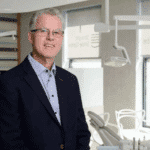The 2007 AAO House of Delegates passed numerous initiatives designed to bolster the resources for orthodontic programs and faculty in the United States and Canada. In the coming year, the AAO will direct more than $1 million to fund these initiatives.
One of the specialty’s greatest challenges, according to an article on aaomembers.org, is vacant faculty positions. With more individuals leaving or retiring from academia than those entering it, the graduate programs are beginning to suffer. In addition, federal and state funding for dental schools continues to decrease. According to past research conducted by the American Dental Education Association (ADEA), an average of 18 to 21 vacant orthodontic faculty positions exist on an annual basis.
However, this figure is only part of a growing concern. The ADEA has also reported that in 2004 there were 645 fewer full-time dental faculty members and 91 fewer part-time dental faculty members than in 1990. However, the number of dental schools has remained fairly consistent over this time frame. In addition, 20% of the vacant dental faculty positions remain open for up to 24 months or longer. Key factors contributing to vacancies are a lack of eligible candidates, a lack of response to position announcements, and salary/budget limitations, the ADEA reports.
In 2006, the AAO House of Delegates set aside $2 million to supplement full-time faculty members’ salaries, the majority of which has been dispersed. In May 2007, the House allowed for the carryover of the remaining funds, which will be distributed to those programs that previously applied for and earmarked the funds for new faculty hires, but were unable to fill the positions before May 31, 2007. The programs will receive these funds once the new faculty members are in place. Although additional funds beyond the original $2 million have not been made available for this year, the AAO will study the viability of this strategy for future years.
Building on this past effort, the 2007 AAO House of Delegates approved a variety of other initiatives designed to have a long-term impact. The AAO Task Force on Recruitment and Retention of Faculty, formed a year ago, will shepherd the majority of these initiatives to fruition.
For example, the AAO House of Delegates approved the establishment of up to six orthodontic fellowships/grants for junior faculty members and/or orthodontic residents/students enrolled in an accredited program. In return for the $150,000 fellowships, the recipients would agree to teach full time for a minimum of 5 years at an accredited US or Canadian graduate orthodontic program. If this commitment is not fulfilled, the fellow would face penalties. The task force is currently developing the business plan for the fellowships and will submit it to AAO Board of Trustees for final approval.
The task force is also working to develop two transitional programs to assist those interested in taking an orthodontic faculty position. One of the programs would prepare orthodontists established in private practice for a transition to academics. The other program would assist dental educators who wish to move into a graduate orthodontic program. The task force is developing a business plan for each program.
In addition, the task force is overseeing the creation of a repository of distance-learning resources for graduate orthodontic programs. The AAO has studied this option for more than 2 years.
Other task force initiatives include the creation of a white paper on orthodontic alumni development that would assist graduate orthodontic programs in raising resources; the development of an AAO-sponsored orthodontic faculty job bank; the creation of a guide for orthodontic education mentors who are encouraging academic careers among dental and orthodontic students; and the sponsorship of individuals interested in teaching so that they may attend the ADEA/Academy of Academic Leadership Institute for Teaching and Learning.








